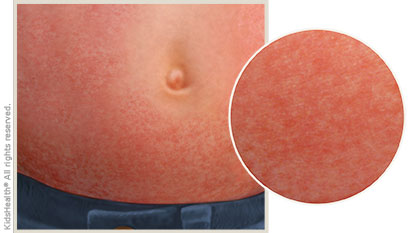Find a Provider
From well-child visits to specialized treatment of complex illnesses and injuries, we offer comprehensive care from an exceptional team of doctors, nurses and allied professionals.
- Parents Home
- Para Padres
- A to Z Dictionary
- Allergy Center
- Asthma
- Cancer
- Diabetes
- Diseases & Conditions
- Doctors & Hospitals
- Emotions & Behavior
- First Aid & Safety
- Flu (Influenza)
- Food Allergies
- General Health
- Growth & Development
- Heart Health & Conditions
- Homework Help Center
- Infections
- Newborn Care
- Nutrition & Fitness
- Play & Learn
- Pregnancy Center
- Preventing Premature Birth
- Q&A
- School & Family Life
- Sports Medicine
- Teens Home
- Para Adolescentes
- Asthma
- Be Your Best Self
- Body & Skin Care
- Cancer
- Diabetes
- Diseases & Conditions
- Drugs & Alcohol
- Flu (Influenza)
- Homework Help
- Infections
- Managing Your Weight
- Medical Care 101
- Mental Health
- Nutrition & Fitness
- Q&A
- Safety & First Aid
- School, Jobs, & Friends
- Sexual Health
- Sports Medicine
- Stress & Coping
Scarlet Fever
What Is Scarlet Fever?
Scarlet fever is an illness that can happen in kids, usually 5–15 years old, who also have strep throat or strep skin infections. The strep bacteria make a toxin (poison) that causes a bright red, bumpy rash.
The rash spreads over most of the body and is what gives scarlet fever (also known as scarlatina) its name. It often looks like a bad sunburn with fine bumps that may feel rough like sandpaper, and it can itch. It usually starts to go away after about 1 week. The skin where the rash was and also the hands and feet might peel for several weeks.
If your child has a rash like this, it's important to call your doctor. Kids with scarlet fever need treatment with antibiotics.
What Are the Signs & Symptoms of Scarlet Fever?
The telltale rash is the main sign of scarlet fever. It usually starts on the neck, face, or chest, then spreads to the trunk, arms, and legs. The face is red, often with a clear area around the mouth. In body creases — especially around the underarms, elbows, and groin — the rash often is a brighter red and forms red streaks.

Other symptoms of scarlet fever usually include:
- a red, sore throat
- a fever
- swollen glands in the neck
Also, the tonsils and back of the throat might be covered with a whitish coating, or look red, swollen, and dotted with whitish or yellowish specks of pus. Early in the infection, the tongue may have a whitish or yellowish coating. Then the coating wears off and the tongue is red and bumpy, called "strawberry tongue." A child with scarlet fever also may have chills, body aches, nausea, vomiting, and loss of appetite.
In rare cases, scarlet fever may develop from a streptococcal skin infection like impetigo or a cut that gets infected. In these cases, the child may not get a sore throat.
How Is Scarlet Fever Diagnosed?
To confirm whether a child has scarlet fever, doctors usually order a rapid strep test or throat culture (a painless swab of the throat) to check for the strep bacteria.
How Is Scarlet Fever Treated?
If a strep infection is confirmed, the doctor will prescribe an antibiotic for a child to take for about 10 days. That usually will cure the infection itself. But it may take a few weeks for the tonsils and swollen glands to return to normal and for the skin to stop peeling.

How Can Parents Help?
Eating can be painful for kids with severe strep throat, so serving soft foods or a liquid diet may be best. Include soothing teas and warm nutritious soups, or cool drinks, popsicles, or slushies. Help your child drinks plenty of fluids. You can give acetaminophen or ibuprofen for fever or throat pain.
If the rash itches, make sure that your child's fingernails are trimmed short so skin isn't damaged through scratching. Try an over-the-counter anti-itch medicine to help relieve the itching.
Can Scarlet Fever Be Prevented?
The bacterial infection that causes scarlet fever is contagious. Kids with scarlet fever can spread the bacteria to others through sneezing and coughing. A skin infection caused by strep bacteria, like impetigo, can pass to others through contact with the skin.
When a child is sick at home, it's always safest to keep their toothbrush, drinking glasses, and eating utensils separate from those of other family members, and to wash these items well in hot soapy water. Wash your hands well and often as you care for a child with a strep infection.
When Should I Call the Doctor?
Call the doctor whenever your child suddenly develops a rash, especially if they also have a fever, sore throat, or swollen glands. This is especially important if your child has any of the symptoms of strep throat, or if someone in your family or at your child's daycare or school recently had a strep infection.

© 1995- The Nemours Foundation. KidsHealth® is a registered trademark of The Nemours Foundation. All rights reserved.
Images sourced by The Nemours Foundation and Getty Images.


